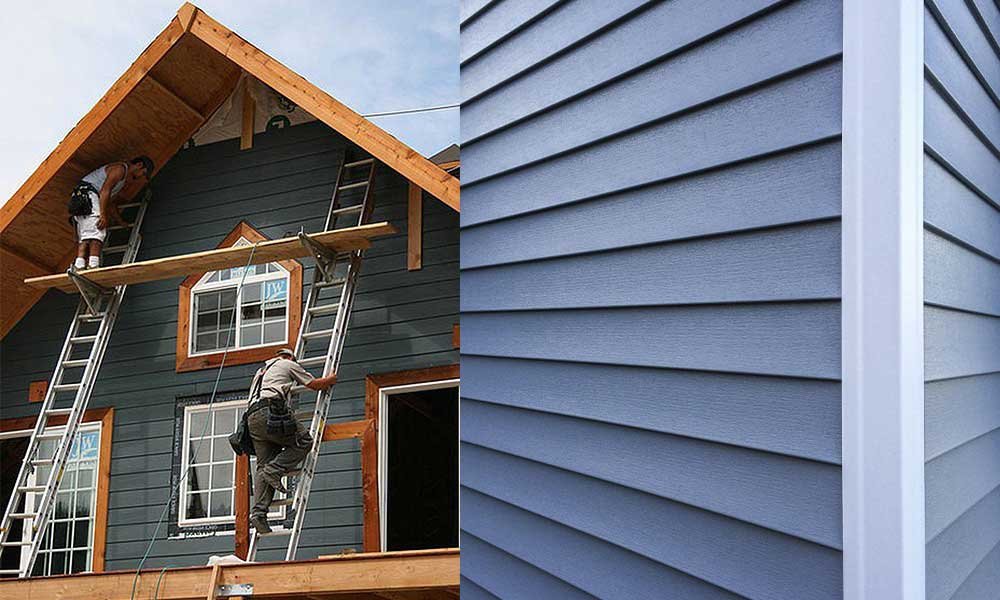What is the Best Foundation Repair Method?
A foundation is the fundamental support system for any residential or commercial premises. The lack of a properly constructed foundation compromises the stability of your entire building. Most foundation issues are caused by the soil on which your house is built. For instance, if your home is built on expansive clay soil, it may prove to be a problem in the long run. Clay soil expands and pushes the foundation upward when wet. When it dries, it shrinks back to its previous size, causing the foundation to settle.
This movement, however minimal, can cause cracks in your foundation and your building’s interior. The kind of repair your home needs depends on the extent of the damage and the measures your contractor might recommend. Do you think your home has a damaged foundation? Here are some options to effectively remedy the problem at hand. Take a look.
Piering
Piering is a very popular foundation repair method. It involves using concrete or metal posts (push piers) to strengthen a weak foundation. A contractor constructs these piers from epoxy-lined or galvanized steel pipes then drills them into the foundation using a hydraulic ram.
Spiral or helical piers, on the other hand, resemble giant-size screws. You can use a hydraulic torque motor to drive the steel piers deep into the ground. The hydraulic jacks raise a falling foundation to the right level then the wall brackets lock it into place.
If your home is built on expansive clay soil, piering could be an excellent option to keep it in tiptop shape. Some of its advantages include:
- Piering hardly disrupts your daily household activities. You can continue with your everyday life as the contractors fix your foundation.
- Piering can help solve unknown foundation problems. If your foundation was constructed somewhat unevenly, you could count on piering to get it to sit properly.
- If you find a well-trained and experienced contractor, you will find that piering is as quick as it is effective.
- Replacing your entire foundation can cost bucket loads of money. Piering solves the problem and helps you save massively while at it.
It is essential to note that the project is not complete until a professional says so. We recommend having your foundation inspected and tested by a structural engineer to ensure it can adequately support the load of your home.
Slab Jacking
One effective variation of slab jacking is polyurethane concrete raising. This method uses a lightweight, high-density foam that expands to lift and level uneven concrete slabs. Known for its precision and durability, polyurethane concrete raising is ideal for repairing foundations with minimal disruption. Its quick curing time and long-lasting results make it a preferred choice for homeowners seeking a reliable solution to foundation issues.
You might have heard people refer to it as concrete lifting. Slab jacking is an efficient foundation repair method for homes built on a concrete slab. It is a simple process that involves drilling holes in the areas where your foundation has a problem. Ultramodern equipment is then used to pour a synthetic lifting solution into the holes and under the concrete slab.
The synthetic solution is intended to fill the space underneath the concrete, lifting the slab to become even with the concrete around it. The holes are then sealed with concrete mix, and your foundation is good as new.
Some slab jacking advantages include:
- Slab jacking costs less than half what it would cost to replace a broken foundation fully.
- You do not have to wait for close to a month for the concrete slab to cure. Once the grout has been injected into your foundation, you can give your foundation a day before resuming normal daily activities. Additionally, the process is less noisy and generates little debris.
- If you are looking for an emergency fix for your foundation, slab jacking is the way to go.
- Unlike concrete slab replacement, the materials required for slab jacking are not easily affected by adversely cold conditions.
- The contractors do not need to dig around or ruin your landscaping to perform the repairs.
Slab jacking is also used in repairing pavements and driveways that have been affected by soil erosion, shifting, or ill-prepared soil during construction. Its affordability and effectiveness also make it a great foundation repair method.
How to Tell If Your Foundation Needs Repair?
Consulting with an experienced professional is crucial in accurately assessing the severity of the issue and determining the best course of action. This proactive approach not only ensures safety but also helps in preventing major foundation problems before they become overwhelming.
Contrary to popular belief, your foundation issues do not mean that your home is no longer habitable. An experienced contractor can help you fix the problem quickly and professionally. However, you need to know when to call the repairman. Here are a few signs to look out for:
- Cracks on your interior or exterior walls might be an indication that your foundation is sinking or the supporting materials are beginning to give way. If they are not addressed, the cracks may widen to become huge rifts in your building.
- Water seeping through your basement or ground floor could mean that your foundation has been compromised.
- Bowing basement walls indicate wavering foundation support.
- Huge gaps around your doors and windows occur when the rampant rising and settling of your foundation and the soil around it.
Do not entrust your foundation repair work to just anyone. Hiring a professional can help you save money and ensure the security of your household. Qualified contractors can also advise you on some of the most reliable foundation repair methods.
Also Read- Which Country Is Best For Construction?
Follow Us
Latest Post
















